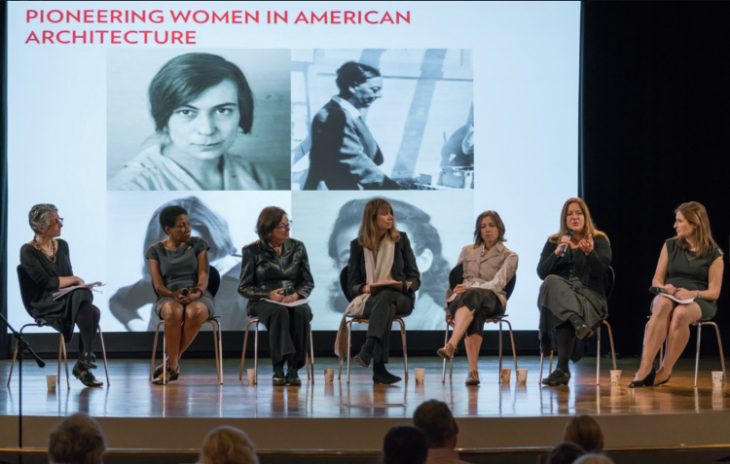Beverly Willis Taps AIA Exec Krakauer to Lead BWAF, Boost Women in Building Industry

Successful architect, AIA leader and creator of major design festival named executive director of BWAF, foundation changing building industry culture, for women, through education and research.
Announcing new leadership and plans for expanding and advancing its global profile, the Beverly Willis Architecture Foundation has tapped a respected and highly visible architect and association leader, Cynthia Phifer Kracauer, AIA, as its executive director. The advocacy group has presented Kracauer today in a public announcement at its annual Industry Leaders Roundtable in San Francisco.
Kracauer brings to the organization high-profile executive and social-entrepreneurial experience as a former principal of the architecture and design firm Swanke Hayden Connell and in her more recent roles as managing director for the Center for Architecture and the American Institute of Architects chapter in New York City. In this latest post, Kracauer conceived and led the initiative to create a citywide architecture-and-design festival called Archtober, now in its sixth year. She has also served as managing director of Oculus magazine and as a California Emergency Management Agency-certified Disaster Services Worker. In other volunteer work, Kracauer has been active with WX: Women Executives in Real Estate and her Audubon Society chapter.
“The Beverly Willis Foundation is delighted to welcome Cynthia as our new executive director,” said Joan Blumenfeld, FAIA, FIIDA, the foundation’s board chair and a principal with Perkins+Will. “We believe that the expertise she brings as an architect and creative manager will build on the good work done by her predecessor, Carol Shapiro, to expand and broaden the reach and impact of the organization.”
Founded in 2002 and based in New York City, the Beverly Willis Architecture Foundation (BWAF) is committed to changing the culture of the building industry, for women, through education and research. The national education and research 501(c)3 nonprofit organization is uniquely dedicated to women working in architecture, landscape, engineering, and construction — market sectors where only about 17% of its leaders are women.
The BWAF Industry Leaders Roundtable, where Kracauer makes her first official appearance for the group, takes place October 18-19, 2016. Now in its sixth year, the event convenes a select group of national representatives from large AEC firms to present strategies for advancing women that are shown to have made a measurable impact in the building industry. Among the featured firms are Stantec, Thornton Thomasetti, Skidmore, Owings + Merrill, Langan, and Perkins +Will, who will share how they are establishing and sharing best practices in the promotion of women.
“We are so pleased that Cynthia Kracauer will help us enthusiastically take on the many challenges women currently face in working in the building industry. Her energy and wide knowledge of the industry are ideal assets in helping expand knowledge about women’s contributions to twentieth-century American architecture,” said Beverly Willis, FAIA, the founder and founding chair of BWAF.
According to BWAF, in the historically male-dominated architecture field women make up 42% of graduates from accredited schools but only 26% of licensed practitioners and a mere 17% of architects who are principals or partners of their firms.
“This foundation has been established by pioneering female architect Beverly Willis to combat this aspect of the industry,” said the new executive director Kracauer. “It will be an honor to continue her ongoing work and develop BWAF’s distinct voice on addressing the persistent inequities in the building industry.”
It is a historic moment for professional women, according to Kracauer, who noted that at no time in the past have the cultural barriers for women been so conspicuously on view in the media, and on the minds of the general population. “I am thrilled to take on this new challenge,” she added, “in part because it culminates my personal narrative, which started with being one of the earliest women at Princeton in the 1970s, when the only restroom facilities for women were labeled ‘staff.’” The challenges continued in her professional life also, even as Kracauer rose through the ranks to reach status of principal at a successful architecture firm.
“In so many ways our culture has evolved, in many ways through the pioneering work of exceptional women like Beverly Willis,” said Krakauer.


About Beverly Willis Architecture Foundation
The BWAF is working to change the culture of the building industry so that women’s work, in both contemporary practices and historical narratives, is acknowledged, respected and valued. BWAF achieves its mission by educating the public and transforming industry practice through collaborations with museums, professional organizations and other groups in the areas of architecture, design, landscape, engineering, technology, real estate and construction. More at www.bwaf.org.





